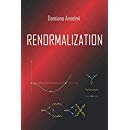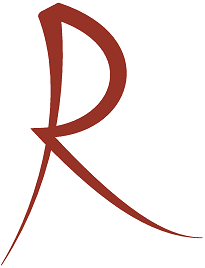I study a class of interacting conformal field theories and conformal windows in three dimensions, formulated using the Parisi large-$N$ approach and a modified dimensional-regularization technique. Bosons are associated with composite operators and their propagators are dynamically generated by fermion bubbles. Renormalization-group flows between pairs of interacting fixed points satisfy a set of non-perturbative $g \leftrightarrow 1/g$ dualities. There is an exact relation between the beta function and the anomalous dimension of the composite boson. Non-Abelian gauge fields have a non-renormalized and quantized gauge coupling, although no Chern-Simons term is present. A problem of the naive dimensional-regularization technique for these theories is uncovered and removed with a non-local, evanescent, non-renormalized kinetic term. The models are expected to be a fruitful arena for the study of odd-dimensional conformal field theory.
JHEP 0006 (2000) 042 | DOI: 10.1088/1126-6708/2000/06/042
I discuss the properties of the central charges $c$ and $a$ for higher-derivative and higher-spin theories (spin 2 included). Ordinary gravity does not admit a straightforward identification of c and a in the trace anomaly, because it is not conformal. On the other hand, higher-derivative theories can be conformal, but have negative $c$ and $a$. A third possibility is to consider higher-spin conformal field theories. They are not unitary, but have a variety of interesting properties. Bosonic conformal tensors have a positive-definite action, equal to the square of a field strength, and a higher-derivative gauge invariance. There exists a conserved spin-2 current (not the canonical stress tensor) defining positive central charges $c$ and $a$. I calculate the values of $c$ and $a$ and study the operator-product structure. Higher-spin conformal spinors have no gauge invariance, admit a standard definition of $c$ and $a$ and can be coupled to Abelian and non-Abelian gauge fields in a renormalizable way. At the quantum level, they contribute to the one-loop beta function with the same sign as ordinary matter, admit a conformal window and non-trivial interacting fixed points. There are composite operators of high spin and low dimension, which violate the Ferrara-Gatto-Grillo theorem. Finally, other theories, such as conformal antisymmetric tensors, exhibit more severe internal problems. This research is motivated by the idea that fundamental quantum field theories should be renormalization-group (RG) interpolations between ultraviolet and infrared conformal fixed points, and quantum irreversibility should be a general principle of nature.
Class.Quant.Grav. 17 (2000) 2847-2866 | DOI: 10.1088/0264-9381/17/15/301
I review recent results on conformal field theories in four dimensions and quantum field theories interpolating between conformal fixed points, supersymmetric and non-supersymmetric. The talk is structured in three parts: $i$) central charges, $ii$) anomalous dimensions and $iii$) quantum irreversibility.
I identify the class of even-dimensional conformal field theories that is most similar to two-dimensional conformal field theory. In this class the formula, elaborated recently, for the irreversibility of the renormalization-group flow applies also to massive flows. This implies a prediction for the ratio between the coefficient of the Euler density in the trace anomaly (charge $a$) and the stress-tensor two-point function (charge $c$). More precisely, the trace anomaly in external gravity is quadratic in the Ricci tensor and the Ricci scalar and contains a unique central charge. I check the prediction in detail in four, six and eight dimensions, and then in arbitrary even dimension.
Phys.Lett. B476 (2000) 182-187 | DOI: 10.1016/S0370-2693(00)00135-0
Various formulas for currents with arbitrary spin are worked out in general space-time dimension, in the free field limit and, at the bare level, in presence of interactions. As the n-dimensional generalization of the (conformal) vector field, the $(n/2-1)$-form is used. The two-point functions and the higher-spin central charges are evaluated at one loop. As an application, the higher-spin hierarchies generated by the stress-tensor operator-product expansion are computed in supersymmetric theories. The results exhibit an interesting universality.
Class.Quant.Grav. 17 (2000) 1383-1400 | DOI: 10.1088/0264-9381/17/6/305
Some recent ideas are generalized from four dimensions to the general dimension $n$. In quantum field theory, two terms of the trace anomaly in external gravity, the Euler density $G_n$ and $\Box^{n/2-1}R$, are relevant to the problem of quantum irreversibility. By adding the divergence of a gauge-invariant current, $G_n$ can be extended to a new notion of Euler density, linear in the conformal factor. We call it pondered Euler density. This notion relates the trace-anomaly coefficients $a$ and $a’$ of $G_n$ and $\Box^{n/2-1}R$ in a universal way ($a=a’$) and gives a formula expressing the total RG flow of a as the invariant area of the graph of the beta function between the fixed points. I illustrate these facts in detail for $n=6$ and check the prediction to the fourth-loop order in the $\phi^3$-theory. The formula of quantum irreversibility for general n even can be extended to $n$ odd by dimensional continuation. Although the trace anomaly in external gravity is zero in odd dimensions, I show that the odd-dimensional formula has a predictive content.
Nucl.Phys. B567 (2000) 331-359 | DOI: 10.1016/S0550-3213(99)00479-4
The trace anomaly in external gravity is the sum of three terms at criticality: the square of the Weyl tensor, the Euler density and $\Box R$, with coefficients, properly normalized, called $c$, $a$ and $a’$, the latter being ambiguously defined by an additive constant. Considerations about unitarity and positivity properties of the induced actions allow us to show that the total RG flows of $a$ and $a’$ are equal and therefore the $a’$-ambiguity can be consistently removed through the identification $a’=a$. The picture that emerges clarifies several long-standing issues. The interplay between unitarity and renormalization implies that the flux of the renormalization group is irreversible. A monotonically decreasing $a$-function interpolating between the appropriate values is naturally provided by $a’$. The total $a$-flow is expressed non-perturbatively as the invariant (i.e. scheme-independent) area of the graph of the beta function between the fixed points. We test this prediction to the fourth loop order in perturbation theory, in QCD with $N_f \lesssim 11/2 N_c$ and in supersymmetric QCD. There is agreement also in the absence of an interacting fixed point (QED and $\phi^4$-theory). Arguments for the positivity of $a$ are also discussed.
Annals Phys. 276 (1999) 361-390 | DOI: 10.1006/aphy.1999.5949
We investigate the quantum conformal algebras of N=2 and N=1 supersymmetric gauge theories. Phenomena occurring at strong coupling are analysed using the Nachtmann theorem and very general, model-independent, arguments. The results lead us to introduce a novel class of conformal field theories, identified by a closed quantum conformal algebra. We conjecture that they are the exact solution to the strongly coupled large-$N_c$ limit of the open conformal field theories. We study the basic properties of closed conformal field theory and work out the operator product expansion of the conserved current multiplet T. The OPE structure is uniquely determined by two central charges, $c$ and $a$. The multiplet T does not contain just the stress-tensor, but also R-currents and finite mass operators. For this reason, the ratio $c/a$ is different from 1. On the other hand, an open algebra contains an infinite tower of non-conserved currents, organized in pairs and singlets with respect to renormalization mixing. T mixes with a second multiplet T* and the main consequence is that c and a have different subleading corrections. The closed algebra simplifies considerably at $c=a$, where it coincides with the N=4 one.
Nucl.Phys. B554 (1999) 415-436 | DOI: 10.1016/S0550-3213(99)00300-4
We determine the spectrum of currents generated by the operator product expansion of the energy-momentum tensor in N=4 super-symmetric Yang-Mills theory. Up to the regular terms and in addition to the multiplet of the stress tensor, three current multiplets appear, Sigma, Xi and Upsilon, starting with spin 0, 2 and 4, respectively. The OPE’s of these new currents generate an infinite tower of current multiplets, one for each even spin, which exhibit a universal structure, of length 4 in spin units, identified by a two-parameter rational family. Using higher spin techniques developed recently for conformal field theories, we compute the critical exponents of Sigma, Xi and Upsilon in the TT OPE and prove that the essential structure of the algebra holds at arbitrary coupling. We argue that the algebra closes in the strongly coupled large-$N_c$ limit. Our results determine the quantum conformal algebra of the theory and answer several questions that previously remained open.
Nucl.Phys. B541 (1999) 369-385 | DOI: 10.1016/S0550-3213(98)00848-7
We study higher spin tensor currents in quantum field theory. Scalar, spinor and vector fields admit unique “improved” currents of arbitrary spin, traceless and conserved. Off-criticality as well as at interacting fixed points conservation is violated and the dimension of the current is anomalous. In particular, currents $J^{(s,I)}$ with spin $s$ between 0 and 5 (and a second label $I$) appear in the operator product expansion of the stress tensor. The TT OPE is worked out in detail for free fields; projectors and invariants encoding the space-time structure are classified. The result is used to write and discuss the most general OPE for interacting conformal field theories and off-criticality. Higher spin central charges $c_{(s,I)}$ with arbitrary $s$ are defined by higher spin channels of the many-point T-correlators and central functions interpolating between the UV and IR limits are constructed. We compute the one-loop values of all $c_{(s,I)}$ and investigate the RG trajectories of quantum field theories in the conformal window following our approach. In particular, we discuss certain phenomena (perturbative and nonperturbative) that appear to be of interest, like the dynamical removal of the $I$-degeneracy. Finally, we address the problem of formulating an action principle for the RG trajectory connecting pairs of CFT’s as a way to go beyond perturbation theory.
Nucl.Phys. B541 (1999) 323-368 | DOI: 10.1016/S0550-3213(98)00783-4

 Quantum Gravity
Quantum Gravity 


